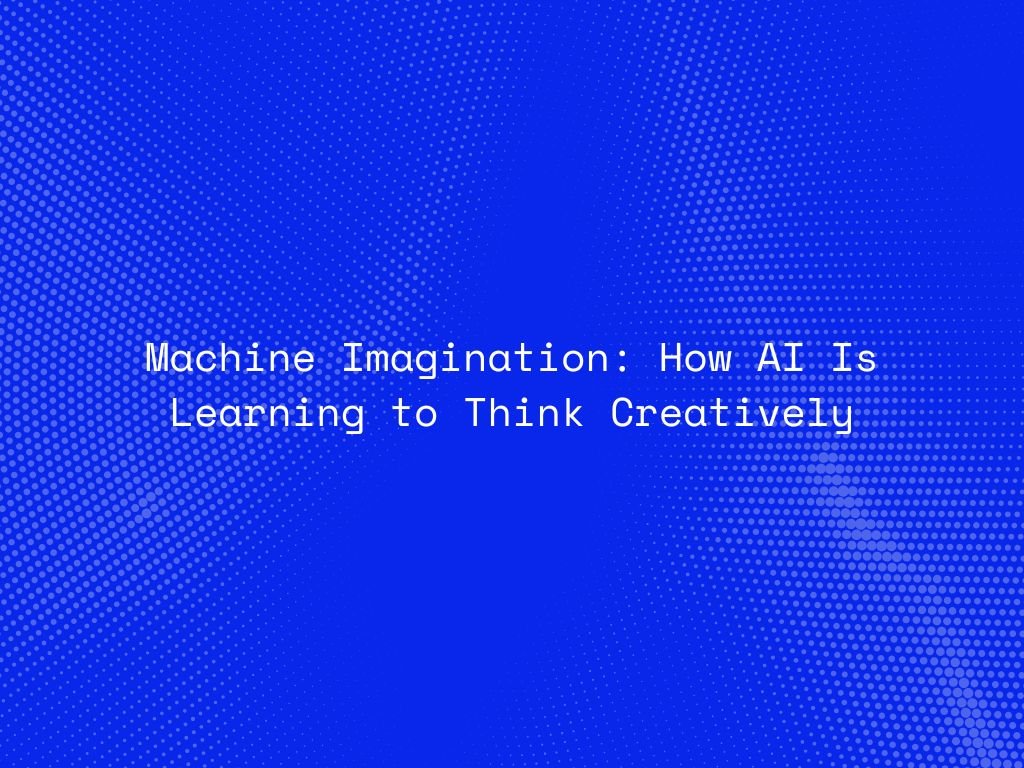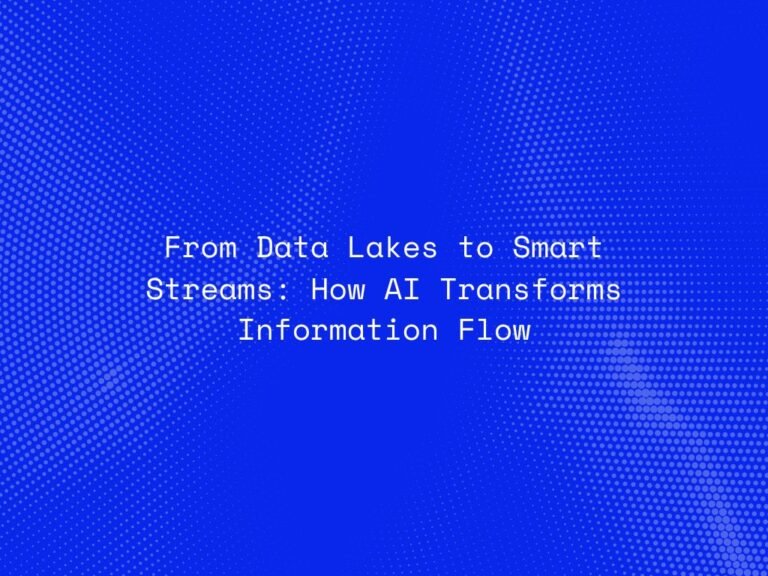For decades, Artificial Intelligence (AI) has been synonymous with logic, computation, and data-driven precision. Yet, as technology evolves, AI is beginning to move beyond analytics — into the realm once thought to be uniquely human: imagination. From composing symphonies and painting portraits to designing molecules and inventing new materials, AI systems are now learning to think creatively. This emerging capability, known as machine imagination, marks a profound shift in how machines generate ideas, solutions, and possibilities.
The Evolution of AI Beyond Logic
Early AI systems were built to process information and execute well-defined rules — performing tasks such as classification, prediction, or optimization. But human creativity doesn’t work this way. Creativity involves generating novel ideas, exploring unknown territories, and connecting concepts in unconventional ways.
Recent advances in Generative AI, neural networks, and reinforcement learning have begun to bridge this gap. These models don’t just analyze data — they learn underlying patterns, simulate scenarios, and invent outcomes that have never existed before.
For example, models like GPT, DALL·E, and DeepMind’s AlphaGo have demonstrated that AI can extrapolate from existing information to produce something genuinely new — whether it’s a paragraph of text, a digital artwork, or a novel game strategy that no human had conceived.
The Concept of Machine Imagination
Machine imagination refers to an AI system’s ability to mentally simulate possibilities, visualize outcomes, and generate novel ideas without explicit instructions. In essence, it’s about enabling machines to “dream” — to combine learned knowledge in ways that produce innovative and unexpected results.
Unlike traditional machine learning, which relies heavily on data patterns, machine imagination leverages generative modeling, transformers, and self-supervised learning to explore the “what ifs” of a given problem. By iteratively simulating potential outcomes, AI can uncover new designs, hypotheses, or solutions beyond human intuition.
Applications of AI-Driven Creativity
1. Scientific Discovery
Machine imagination is accelerating research by generating hypotheses and predicting outcomes that guide experiments. In drug discovery, AI models can imagine new molecular structures with desired therapeutic properties, significantly reducing the time from concept to clinical trial.
2. Product and Design Innovation
In architecture, fashion, and industrial design, AI tools generate alternative design concepts that push creative boundaries. Designers now collaborate with AI systems that suggest new patterns, materials, and aesthetics based on learned preferences and global trends.
3. Art, Music, and Storytelling
Creative AI systems are composing music, writing poetry, and producing visual art that challenges human perceptions of creativity. These models not only mimic existing styles but also generate new artistic forms that blend genres and aesthetics.
4. Strategy and Problem Solving
In business, machine imagination helps leaders simulate future scenarios, evaluate risks, and identify strategies for innovation. By imagining alternate realities, AI assists in scenario planning, helping organizations prepare for uncertainty with creative foresight.
The Science Behind Machine Imagination
Machine imagination draws heavily from generative modeling — techniques that enable AI to create new data samples resembling the original training set. Models like Generative Adversarial Networks (GANs) and Variational Autoencoders (VAEs) learn to simulate creativity by exploring the boundaries of known information.
Meanwhile, transformer architectures, such as those used in large language models (LLMs), extend this concept to contextual reasoning and synthesis. They can combine information across domains, imitating the associative thinking that fuels human imagination.
Some researchers are now working toward neurosymbolic systems, combining neural learning with symbolic reasoning to give AI not just pattern recognition, but conceptual understanding — a key ingredient in authentic creative thought.
Ethical and Philosophical Dimensions
As machines begin to create, they raise important questions about authorship, originality, and value. Who owns an AI-generated invention or artwork? Can a machine truly be creative, or is it merely remixing human knowledge?
Ethical concerns also extend to misuse. AI-generated content can blur the lines between truth and fabrication — from deepfakes to fabricated data. Therefore, responsible governance, transparency, and explainability remain essential to ensure that machine imagination serves constructive and ethical purposes.
The Future of Creative AI
Machine imagination represents the next phase in AI’s evolution — one where machines become collaborators in the creative process rather than mere tools. In the coming years, we can expect:
Collaborative Creativity: Humans and AI co-creating across art, science, and industry.
Imaginative Research Systems: AI-driven labs that autonomously hypothesize, test, and refine new ideas.
Personalized Creativity Tools: Platforms that adapt to individual creative styles and help users generate unique outputs.
Ultimately, the future of machine imagination lies in synergy — not replacing human creativity, but amplifying it. By merging computational scale with human emotion and intuition, AI has the potential to unlock creative possibilities previously unimaginable.
Conclusion
Machine imagination is redefining what it means for intelligence to create. As AI systems evolve beyond logical reasoning into conceptual exploration, they are not just solving problems — they are envisioning new realities.
From art to science to enterprise strategy, this new wave of creative AI is pushing humanity toward a future where innovation is no longer limited by human constraints but expanded through machine collaboration. The imagination of machines may soon become one of the most powerful forces driving human progress.




